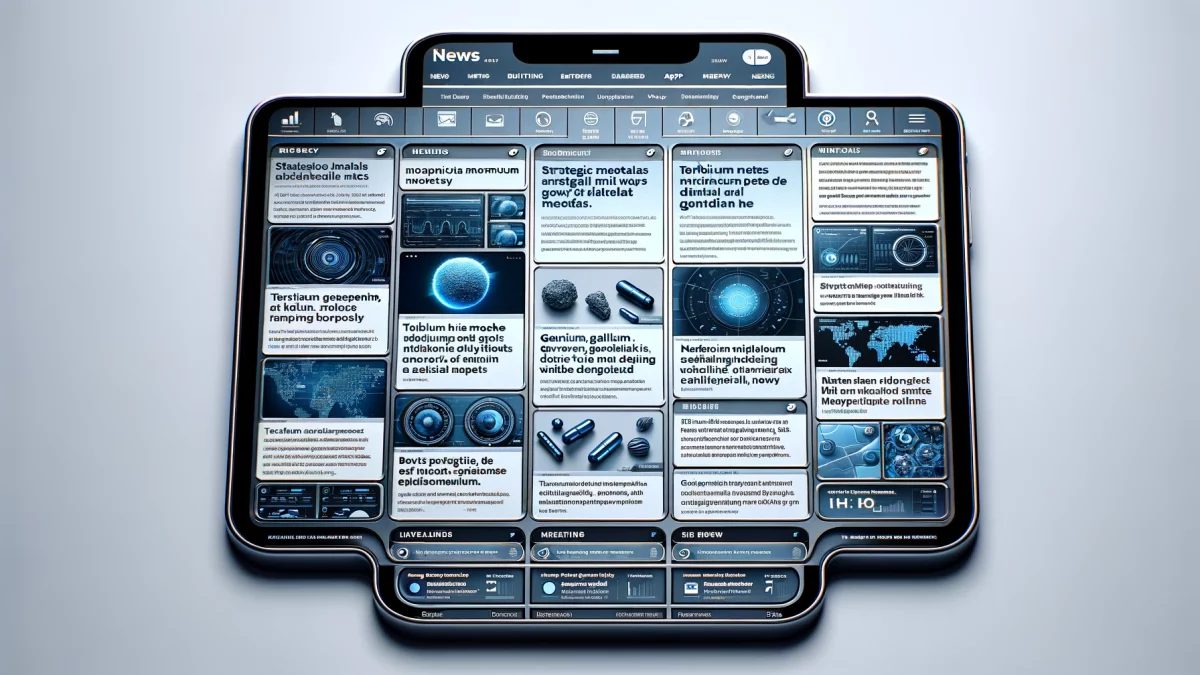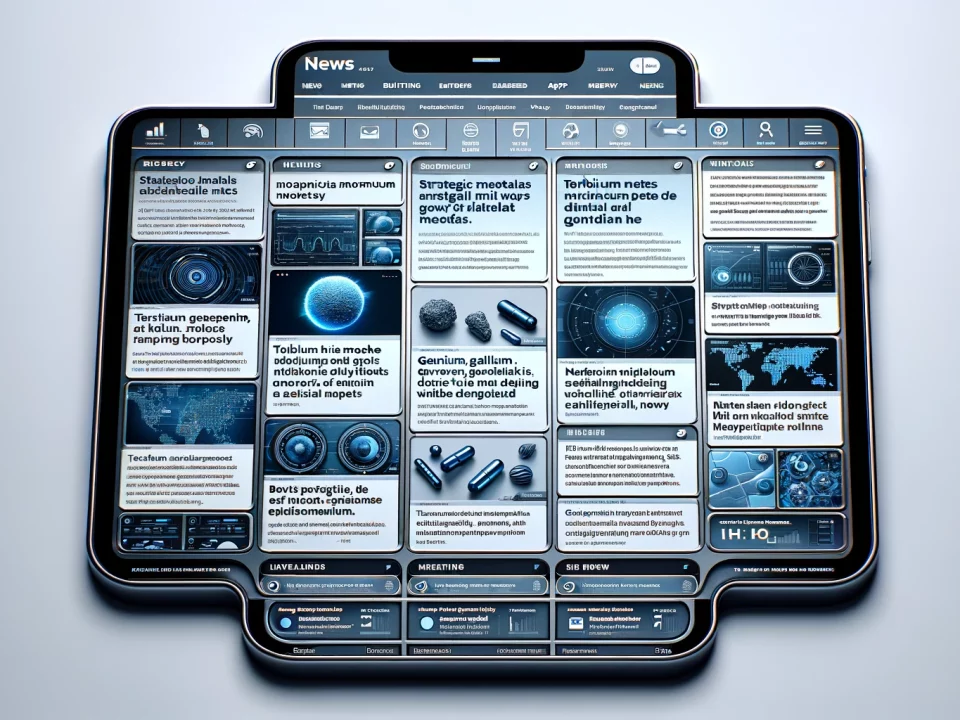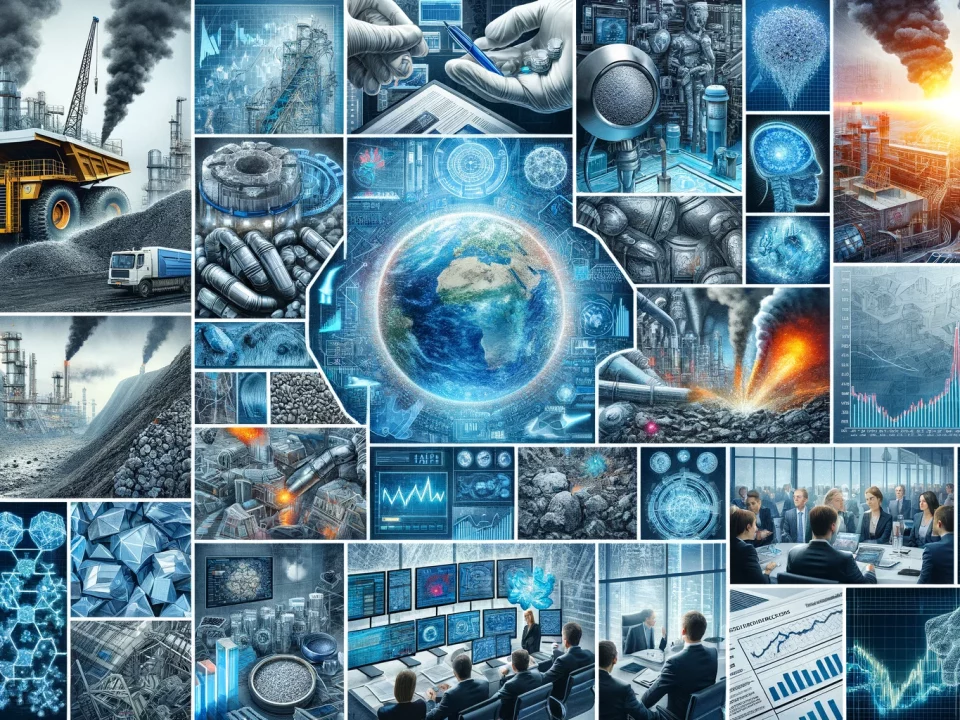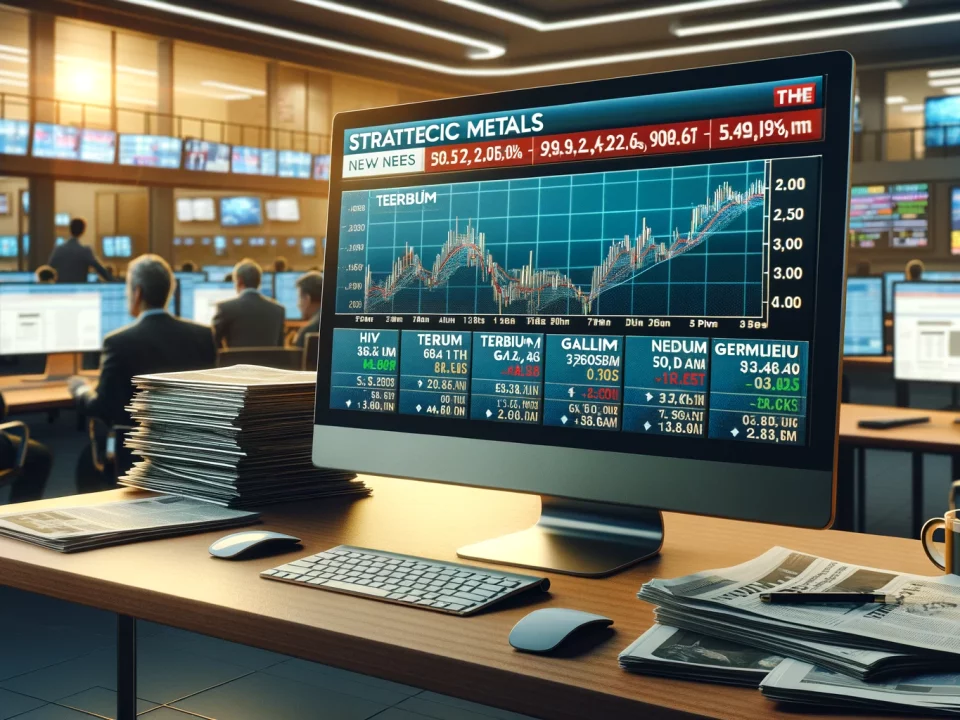
Weekly News Review May 13 – May 19 2024
May 18, 2024
Weekly News Review May 27 – June 2 2024
June 2, 2024Welcome to our weekly news review.
US CONGRESS TO FUND A PENTAGON STUDY ON DEEP SEA-MINING:
Feasibility study on extracting and refining critical minerals from ocean sources –
The United States is taking new steps to bolster its supply of critical minerals. In its latest move, Congress will fund a feasibility study on deep-sea mining by the Department of Defense, the Wall Street Journal reports. The documents seen by the WSJ state that under the $2 million effort, the Pentagon will work with “an entity experienced in refining critical minerals and producing battery-grade” metals. The project will explore the possibility of processing raw materials from the ocean floor in the U.S.
However, the study will only begin once the annual defense budget has been passed later this year. U.S. lawmakers already pushed to ramp up deep-sea mining activities in a new bill earlier this year. The proposal would provide financial, diplomatic, and infrastructure support for the industry but has yet to be passed.
Controversial, but Norway Forges Ahead –
Deep-sea mining involves collecting rocks, or so-called nodules, sitting on the ocean floor. These nodules contain minerals and metals, such as manganese, nickel, or cobalt. It is controversial even in the mining industry, as the environmental impacts are yet to be fully understood. Multiple countries, including the United Kingdom, Germany, and France, have previously supported a moratorium granting deep-sea mining permits. The country pushing ahead of concerns, however, is Norway.
The Nordic country’s parliament approved a proposal to open an area in the North Atlantic for exploration and extraction efforts earlier this year, making it the only country worldwide to go ahead with commercial deep-sea mining. The Norwegian branch of the World Wildlife Fund (WWF) has sued Norway for its plans this week, citing insufficient impact assessments.
RARE EARTHS: CHINA’S SHENGHE TO ACQUIRE AFRICAN PROJECTS FROM AUSTRALIA’S STRANDLINE RESOURCES:
Shenghe has invested in multiple rare earth projects worldwide, including in Tanzania.
Australian critical mineral developer Strandline Resources has agreed to sell its stake in four Tanzanian mineral sand projects to a Chinese rare earth company, Shenghe Resources’ subsidiary. According to the company, Strandline will receive roughly $28.6 million for the transaction. The four projects in Tanzania, namely Fungoni, Tajiri, Sudi, and Bagamoyo, are mineral sand deposits containing zirconium, titanium, and rare earth feedstocks.
According to the German Federal Institute for Geosciences and Natural Resources, this deposit occurs predominantly on dunes, rivers, and coastal locations. China is the leading export destination for raw materials from mineral sands, which are then processed in the country’s south refining plants.
Shenghe Continues to Expand Around the World –
The purchase of the Tanzanian projects marks Shenghe’s latest move to enter foreign markets. The company holds shares in several international companies in the rare earths industry, including M.P. Materials, the operator of the Mountain Pass Mine in California.
In 2023, Shenghe entered the Tanzanian market when it acquired a 19.9 percent stake in Peak Rare Earths and secured all of the rare earth concentrate for seven years from its Ngualla project, as well as at least 50 percent of the intermediate and final products from the venture.
In December last year, Shenghe made major headlines when it acquired shares of ailing Canadian rare earth miner Vital Metals. Under the deal, Vital agreed to sell its raw material to the Chinese company, which was a setback for Western supply chain emancipation efforts. Shenghe also received a 50 percent interest in Vital’s Wigu Hill rare earth project in Tanzania, possibly increasing the position to 75 percent.
US DOES NOT SEEK TO DECOUPLE FROM CHINA BUT SEEKS DIVERSIFICATION:
The Secretary of the Treasury, Janet Yellen, urges more cooperation between the U.S. and Europe on critical minerals.
A week after the United States announced sweeping tariffs on Chinese imports, Secretary of the Treasury Janet Yellen said the U.S. is not trying to decouple from China but wants to diversify. Speaking at an event in Frankfurt, Germany, Yellen talked about U.S.-EU relations and highlighted the importance of the transatlantic partnership but emphasized that both the U.S. and Europe depend on the People’s Republic in fields like critical minerals as global supply chains are overconcentrated in China.
To de-risk supply chains, Yellen advocated more collaboration under what she calls “friend-shoring,” or the formation of resilient networks through economic ties with like-minded nations.
In this regard, Yellen added that the proposed U.S.-EU Critical Minerals Agreement would be mutually beneficial. The two sides have been negotiating a critical minerals agreement since an announcement in 2023. Under such an agreement, critical minerals mined or processed in the E.U. would qualify for electric vehicle tax credits under the U.S. Inflation Reduction Act.
This would make European carmakers more competitive while bolstering Western supply chains or critical minerals. However, despite announcements from both sides to intensify efforts, negotiations have yet to conclude.
European Commission President Ursula von der Leyen struck a similar note in her speeches regarding EU-China relations. For example, in March 2023, von der Leyen said she believes it “is neither viable – nor in Europe’s interest – to decouple from China.” She added that the People’s Republic is a leading trading partner, but relations must be “rebalanced.”
CHINA MAY IMPOSE TARIFFS OF UP TO 25% ON IMPORTED VEHICLES:
In response to U.S. tariffs announced last week. It would target large-engine vehicles.
According to the China Chamber of Commerce to the E.U., China could introduce tariffs on imported large-engine vehicles up to 25 percent. In a post on the platform X, the lobby group said insiders informed them of the move and added that it would have implications for the European Union and the United States. The levy would be the first major Chinese retaliation following U.S. President Biden’s announcement to impose tariffs on imported Chinese goods last week and the E.U. launching an investigation into Chinese subsidies on electric vehicles last year.
In 2023, the People’s Republic imported 250,000 cars with engines larger than 2.5 liters, accounting for 32 percent of the total imported vehicles. If implemented without explicitly targeting the E.U. or the United States, the most affected carmakers would also include Japanese brands such as Toyota, Mercedes, and BMW, according to the consultancy Intralink in an interview with Bloomberg.
Liu Bin, chief expert at the China Automotive Technology & Research Center, first hinted at the Chinese response in an interview with the government-affiliated Global Times on Tuesday. Bin proposed an import tariff on vehicles with engines larger than 2.5 liters, which is within WTO regulations.
CHINA EXPORTS MORE GALLIUM, LESS GERMANIUM
According to figures from the Chinese customs authorities, the export of gallium from China increased significantly in April compared to the previous month. Five thousand one hundred eighty-two kilograms of the technology metal were exported, an increase of 327% compared to March. However, this means that exports are still slightly below 2023 levels for the same period.
The picture is different for Germanium: at 2,345 kilograms, around 27% less was exported from the People’s Republic, although the figure is significantly higher than in April 2023. Beijing introduced export restrictions on the two critical raw materials in August last year. As a result, exports fell, partly because the required permits and applications can take several weeks to process. The leading export destination in April was Germany. With 3,500 kilograms, more than half of China’s exported gallium was destined for the European country. Roughly half of the exported Germanium was shipped to Germany.
The main applications for gallium and Germanium are semiconductors, solar panels, LEDs, and lasers.
UNITED STATES CRITICAL MINERALS TAPS A1 TO DETECT RARE EARTHS MORE EFFECTIVELY:
Artificial intelligence will be used to explore the Sheep Creek deposit in Montana, which also contains gallium.
The mining company U.S. Critical Materials wants to use artificial intelligence (A.I.) to search for raw materials and has signed an agreement with VerAI Discoveries, the developer of such technology. Mining.com first reported this on Monday. The platform is set to explore Sheep Creek in the U.S. state of Montana, a rare earth deposit containing gallium.
The two companies explain that VerAI’s AI-driven exploration technology could more accurately identify potential drilling targets in densely vegetated areas, increasing the probability of success and minimizing environmental impact. The overarching goal is to strengthen the security of the supply of critical raw materials in the United States.
Both rare earths and gallium are essential for green and digital technologies, but China largely dominates production. Last year, the People’s Republic imposed export restrictions for gallium and Germanium, resulting in a decline in exports, partly because permits had to be applied. The U.S. had previously introduced similar export controls for semiconductor technology, which met with resistance from China.
Promising future—more on A.I. and raw materials: Artificial intelligence is becoming increasingly crucial in exploring raw materials. For example, U.S. mining company KoBold Metals relies on this technology as success rates in the search for deposits are declining, and new methods of mining exploration are needed. Raw material giant China also plans to use A.I. in exploration efforts. The U.S. Department of Defense intends to make the raw materials markets more transparent with the help of corresponding technologies.
EUROPE’S CRITICAL RAW MATERIALS ACT:
The Critical Raw Materials Act (CRMA), intended to secure Europe’s supply of vital raw materials, enters into force in the E.U. today. The CRMA stipulates that ten percent of the annual demand for resources classified as strategic must be sourced from domestic mining in the E.U. by 2030.
According to the industry association Eurometaux, this would require at least ten new mines and more than a dozen plants for further processing, as the CRMA also sets out targets for domestic downstream processing and recycling.
In addition to these targets, the CRMA lists a whole series of measures that still need to be finalized, such as a European platform for the joint purchasing of raw materials (Paywall), as already exists for gas. This is viewed critically in the industry, as customers’ requirements are too different given the large number of raw materials covered by the law. Therefore, there is likely to be a lot of discussion between politicians and the industry regarding financing the act.
According to Bernd Schaefer, CEO of EIT RawMaterials, an independent organization of the European Union that promotes innovation along the value chain for raw materials, no equity from financial institutions is currently flowing into the sector.
We invite you to read our white paper on the subject for more information on the issues that still need to be addressed and how the European value chain for rare earths and lithium is positioned. Please respond to this email to receive a copy.
$19 BILLION FOR SOUTH KOREAS CHIP INDUSTRY:
President Yoon announces government support along the entire value chain.
Alongside Taiwan, South Korea is regarded as a leader in producing modern computer chips. The South Korean news agency Yonhap reports that the country intends to support the semiconductor industry with the equivalent of $19 billion to ensure this remains true. The measures presented by President Yoon Suk Yeol include financial support programs and research and development initiatives along the entire value chain, from chip design and material supply to actual production.
In January of this year, President Yoon presented plans to build the world’s largest center for chip production. The cluster will be built south of Seoul’s capital and attract almost $500 billion in investments.
As a high-tech location, South Korea largely relies on imports of the necessary raw materials such as gallium and Germanium to supply its advanced industries. To address this, the country is in talks with nations with mineral resources, such as Vietnam or Canada, and the raw materials giant China.
CLIMATE TARGETS ACHIEVABLE – TRIPLING OF RENEWABLE ENERGIES REQUIRED BY 2030:
Bloomberg’s analysis calls for more investment in low-carbon energy. For example, land use for raw material extraction is also a challenge.
Numerous countries worldwide have committed to achieving net-zero emissions by 2050 and limiting global warming to 1.5 degrees Celsius in the Paris Climate Agreement. This goal has yet to be completed, but decisive action must be taken now, according to a new analysis by BloombergNEF (BNEF).
The report shows what progress has already been made, for example, in accelerating the energy transition. Despite this momentum, emissions are still too high, and a reduction is urgently needed. According to BNEF, greener electricity generation could make the most significant contribution here: to reach net zero, the capacity of renewable energies would have to be tripled by the end of the decade. This would leave more time to tackle other sectors that are more difficult to convert, such as steel production and aviation, where cost-effective low-carbon solutions still need to be fully developed.
More Investment Needed – More Space as Well
However, a faster energy transition also requires more spending. According to BNEF’s calculations, for every dollar spent on fossil fuels, an average of three dollars would need to be invested in low-carbon energy by 2030. A complete decarbonization of the global energy system by 2050 could cost 215 trillion dollars—an enormous contribution but only 19 percent higher than in a scenario that falls short of the Paris Agreement targets.
According to BNEF, other challenges must be overcome, including land use, as the demand for different sectors, such as food production and biodiversity conservation, is also growing. For example, onshore wind and solar projects would require much more land than the fossil fuel technologies they are replacing. In addition, more mines are needed to supply the raw materials required for net zero – an area larger than Uruguay would be necessary for this by 2041. By 2050, however, the area needed for critical minerals would decrease slightly.






